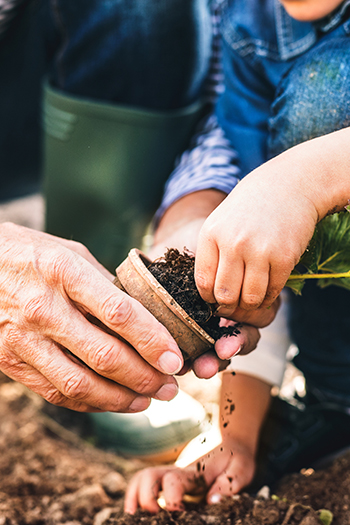
Gardening Basics
When children help grow fruits and vegetables, research shows they are more likely to try a wider variety of produce and eat more than their non-gardening peers. Now that the weather is warming up in New England, consider planting a family garden with these tips.
By May, most vegetables can be planted, particularly if all danger of frost has passed. If planting from seeds, choose options like arugula, carrots, turnip, beans and corn. If opting for transplants, celery, leeks, potatoes, eggplant, peppers and tomatoes are top choice. For other crops, including beets, leaf lettuce, onion, broccoli, cucumbers, melons, pumpkin and squash, either seeds or transplants can be used.
If soil or yard space isn't favorable for gardening, opt for an above-ground garden bed or utilize large pots and window boxes instead. You can grow tomatoes, salad greens and cucumbers right on your deck, as well as fresh herbs like basil and parsley in window boxes.
Fruit trees and berries are also fun to plant with little ones, simply remember that it may be necessary to plant different varieties so they are able to cross pollinate, like with apple trees. Apples, peaches, pears, blueberries, blackberries, strawberries and raspberries are all sweet treats when it comes time to harvest. While young plants might not yield much fruit in the beginning, the joy of watching them grow through the years with your little ones is well worth the wait.
Have fun digging in the dirt. Not only is gardening a great opportunity to show little ones how their food grows, it's also a chance to teach them about the critters that live underground and how soil health impacts the nutritiousness of food. Visit your local library to learn about composting and other ways to take care of the soil around you.


